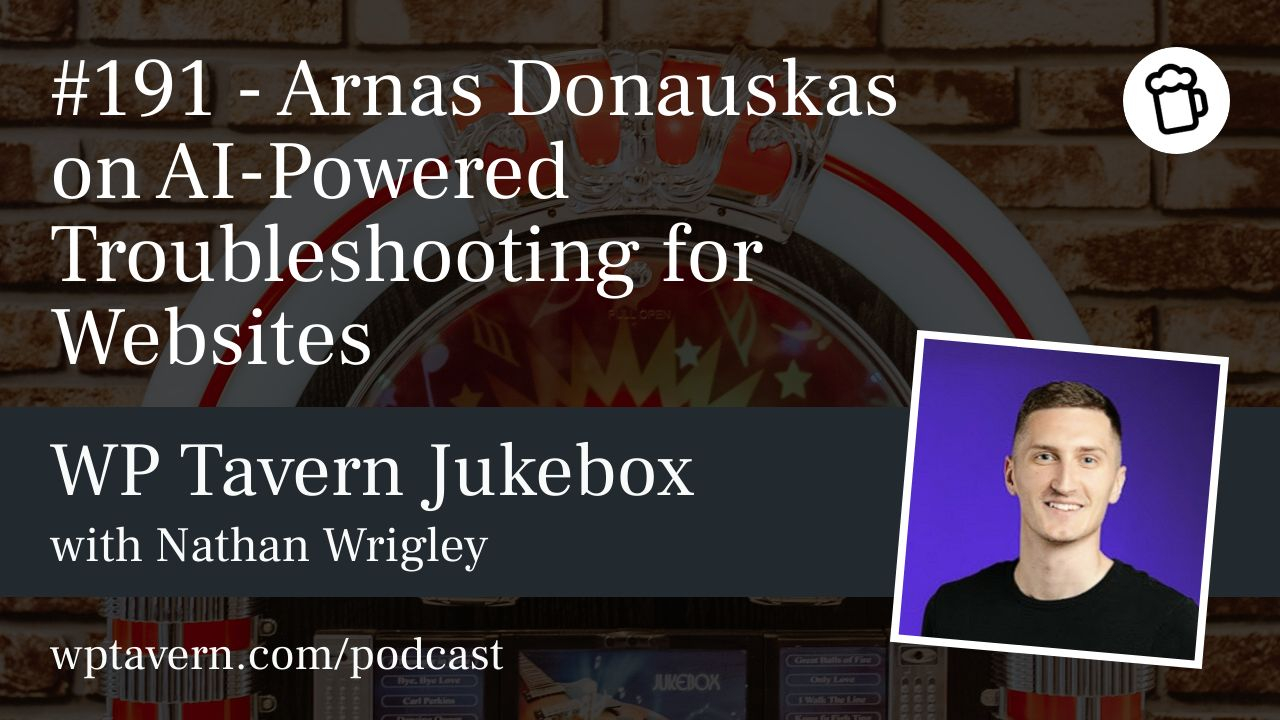Arnas Donauskas, product manager at Hostinger, joined the Jukebox Podcast at WordCamp US to discuss how AI is being used to simplify website creation, monitoring, troubleshooting, and performance optimization for WordPress users. His experience began with building a site for college and evolved into leading a team that builds tools to ease site management and onboarding.
Hostinger uses AI both as an onboarding aid—creating websites from prompts via a WordPress AI builder—and as a proactive operations assistant. The company’s AI tools monitor hosted sites’ HTTP responses continuously. When an error appears (403, 500, critical failures), the platform gathers logs, strips sensitive data, and runs those inputs through a troubleshooter that maps available automated actions to the most likely fixes. In many cases the platform applies fixes automatically, not just suggesting them, allowing issues to be resolved without manual intervention.
Current results show a roughly 70% success rate for first-attempt automated fixes, with about 16,000 sites fixed per month. Subsequent automated tries improve the overall success rate, and when automation can’t resolve an issue, Hostinger’s success specialists receive a full dossier of logs and attempted fixes so they can assist more rapidly. Backups and safe restore options are available if needed.
Performance optimization is another major focus. Hostinger benchmarks sites (using Google PageSpeed) and applies safe, automated optimizations—image handling, JS/CSS minification, caching adjustments—on a per-site basis. Early data suggests average improvements around +20 points on mobile PageSpeed and +10 on desktop. Optimizations are staged: safe steps run first, and clients are offered optional, higher-risk tweaks (e.g., some lazy-loading changes) with clear rollback capabilities if visuals break.
The optimizations are individualized per site, but Hostinger is working on more granular logic that would tailor decisions based on site type (brochure vs. WooCommerce) and page roles (landing vs. product pages). Currently there’s no extensive user-facing customization for each optimization, though Hostinger plans to enrich the AI’s knowledge of different site types.
Communication balances transparency with noise reduction. After optimizations, clients receive an impact summary and a simple log of actions in user-friendly language. Most engagement happens in the interface rather than by frequent emails; many users spend 10–15 minutes reviewing the results. Advanced users may be offered downloadable, detailed logs in the future.
AI tooling relies on testing multiple models and providers for speed and accuracy. Hostinger measures latency and correctness, selecting models that best handle the required data and tasks. Engineering and operational costs were nontrivial—development took around seven to eight months—but the troubleshooter and optimiser are included in hosting plans at no extra fee.
Product roadmap highlights:
– Increase automated fix success toward a 90% target by expanding the set of supported automatic fixes.
– Implement a “way back machine” capability: track file changes over time, identify the exact change that caused a failure, and offer safe restores or targeted rollbacks (including calculating potential missed orders for e-commerce).
– Expand the troubleshooter and optimiser to cover softer issues: SEO checks, accessibility fixes, image restoration, grammar corrections, and in-admin suggestions.
– Introduce risk-tiered optimizations where clients can approve more aggressive changes knowing they can revert.
Hostinger emphasizes keeping users in control. While fully automated modes could be offered, confirmation options remain important—after all, these are client sites and business-critical assets. The platform aims to make the confirm decision obvious and trustworthy.
On the question of proprietary vs. open-source models and data privacy, Arnas noted that many tasks can be run against free or open models with the right prompts, but paid proprietary models often offer better accuracy and speed. Hostinger tests different providers and models, mindful of performance, cost, and alignment with user expectations and privacy. Time will determine how open-source options evolve in this space.
In practice, Hostinger uses HTTP monitoring as the primary signal to detect critical issues because they host customers on their infrastructure; this provides fast, reliable detection except in some CDN configurations. For performance checks they run scheduled PageSpeed tests and trigger optimization suggestions when improvements are possible.
Arnas encourages feedback via Hostinger’s support chat and is reachable on LinkedIn. The approach—automating routine maintenance, offering safe automated fixes, and keeping users informed—reflects a move toward reducing the time and stress of site maintenance so owners can focus on growth rather than upkeep.


